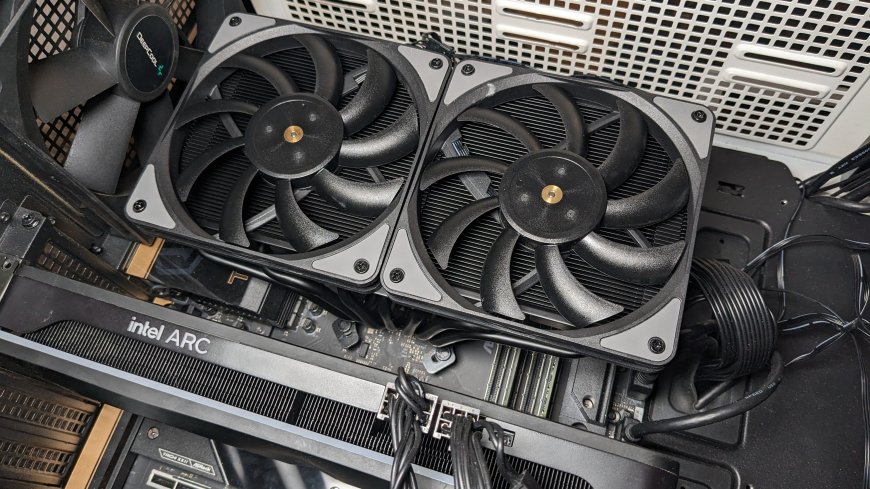Extended Review of the Jiushark JF13K Diamond Mini: A Compact Cooling Solution
Jiushark might not be a household name in the United States, but it's gaining recognition in Asia. Founded half a decade ago, the brand emphasizes simplicity and basic functionality in its products. We have previously discussed some of Jiushark's innovative products, such as the Jiushark M.2 Three, an M.2 SSD cooler. Our latest review focuses on the JF13K Diamond Mini, the successor to the JF13K Diamond air cooler. This new model boasts a more compact design and a unique top-down form factor, raising the question of whether its performance matches its style.

Key Features and Installation Process
The JF13K Diamond Mini, like its predecessor, features a top-down cooled wide heatsink with dual fans. The original model used two slim 120mm fans, but the Mini version employs thicker 100mm fans, reminiscent of designs seen in Cooler Master products from 15 years ago. The installation process of the JF13K Mini is notably simpler than its predecessor, offering an accessible and straightforward method.
Also check Asus ROG Ally Review: A Promising Yet Imperfect Handheld Gaming PC
Compatibility with High-Profile RAM and SSD Heatsinks
A crucial aspect of any cooler is its compatibility with other components. The JF13K Diamond Mini comfortably accommodates 45mm tall RAM, which is commonly used in systems like the i7-13700K, and SSD heatsinks up to approximately 50mm in height. This compatibility is essential for users looking to maintain or upgrade their systems without compatibility concerns.
Limitations in Small Form Factor Systems
While the JF13K Diamond Mini is an excellent choice for small form factor (SFF) systems, it has its limitations. Its width requires additional space to the side of the motherboard, making it incompatible with certain ITX cases. This limitation is evident in our testing with the Ryzen 7700X system housed in a Silverstone SUGO 14 case.
Fan Specifications and Performance
The cooler's performance is significantly influenced by its fans. The JF13K Mini comes with two 100mm fans, each 25mm thick, and offers three style choices: black without ARGB lighting, black with ARGB lighting, and white with ARGB lighting. However, these fans have a drawback – they are notably louder than necessary, which is evident from our benchmark tests.
Design Changes Compared to the Original Model
Comparing the Mini with its predecessor, we notice several design alterations. The Mini is not as wide but taller due to the use of thicker fans. While both models have radiators of similar thickness, the mini's increased height is attributed to the 25mm thick 100mm fans. There are also differences in the CPU blocks and the method of connecting the fans, with the Mini opting for a single screw connection and fan clips.
Reduction in Cooling Capacity
One significant change in the Mini is the reduction of copper heatpipes from seven to six, leading to a decreased maximum cooling capacity. This alteration is critical for users considering the cooler's efficiency for their specific system requirements.
Packaging and Included Contents
The JF13K Mini Diamond is delivered in a compact package, measuring approximately 10 x 5 inches. The box neatly contains all necessary mounting accessories, thermal paste, a user manual, and the cooler itself. The package includes a heatsink, two 100mm fans, mounting for modern AMD and Intel platforms, thermal paste, and a user manual.
Installation Procedure for LGA 1700
Jiushark has significantly improved the installation process with the JF13K Mini. The procedure is user-friendly, beginning with the assembly of the motherboard backplate and followed by securing the standoffs with rubber rings. This simplified installation is a notable improvement over the original model.
Conclusion: A Step Forward and Backward
The Jiushark JF13K Diamond Mini is a product of both advancements and setbacks. Its compact design and improved installation process are commendable, but its limited compatibility with certain SFF systems and the noisy operation of its fans are notable drawbacks. Whether these features align with the needs of potential buyers will depend on their specific system requirements and priorities in a cooling solution.


































